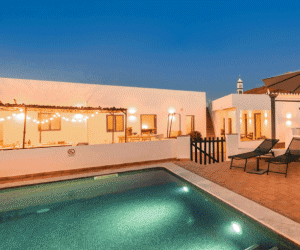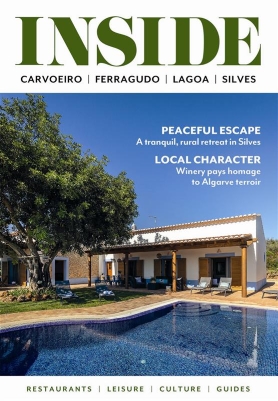FORAGING IN THE ALGARVE COUNTRYSIDE, INSIDE DISCOVERS A WEALTH OF DELICACIES FREE FOR THE PICKING
Most people living here in the Algarve can forget that the countryside is steeped in the bounties of nature, and many venture little beyond the abundant wild thyme that grows on the cliff-tops near Carvoeiro. Our guide into the depths of the Portuguese countryside was to be Raoul Van Den Broucke, a Flemish foraging expert who spent 20 years of his life living here in the Algarve until he moved to England in 1995.
Here, he was one of the first to discover the wealth of wild mushrooms that grow in the Monchique hills and his work was the catalyst for the small but flourishing business operated today by locals of the hills, who harvest and sell the chanterelles and pied de mouton (hedgehog fungus) mushrooms that end up on the menus of gourmet restaurants as far away as the UK. But as we were to discover, there is a great deal more to foraging in the Algarve than mushrooms.
Our journey started surprisingly with a visit to Sítio das Fontes, a natural spring in the Arade river valley near Estombar that has been developed into a leisure area for tourists and the local community. Here, walking along paved pathways, Raoul showed us counsome of the edible plant species that grow locally such as sea spinach, wild asparagus and samphire. To harvest some of the latter, we drove through Silves and en-route to Monchique stopped at a great spot in the Odelouca river valley where this much-prized product, a favourite ingredient of chefs to serve with fish due to its natural saltiness, seemed to be the main form of vegetation. It grows freely all along the tidal riverbanks and is good for eating between February and May.
Considering that it sells at around €40 per kilo, this was quite a find! We left the river valley with a small crop of samphire and headed up the hills towards Monchique where, on a gentle slope near the village of Casais, we were led to the very place where Raoul had harvested his mushrooms back in the 1980s. We gathered a small basketful, learning along the way some of the basic principles of identifying what we could and could not eat: mushrooms with white gills tend to be poisonous, and don’t even think of eating a mushroom you are not totally sure about.
It’s fairly easy to get to know one or two varieties and concentrate on collecting just those, but a simple mistake can be deadly, such as the lighter shaded, morerounded mushroom that’s similar to the chanterelle which is in fact poisonous. Our crop from an hour or so of foraging for the mushrooms was limited to a small basketful, but in a tiny backstreet in Monchique town is local mushroom king José Páscoa, who had crates of chanterelles and pied de mouton stacked in his warehouse ready for export.
Heading back down the mountain, an area of countryside near Silves is a haven for wild asparagus. But picking it is in fact no easy task, as the one or two green shoots of asparagus that grow in each of the thorny bushes are well protected. The technique is to push the bush aside with a booted foot to expose the shoot and snap it at the point where the flesh becomes tender. Elsewhere, a stone wall was covered in what looked like weeds, from where Raoul picked perhaps one of the most unusual plants of the day.
The tiny round leaves known as pennywort taste remarkably similar to mangetout pea pods and make a fabulous salad ingredient, as do the wild fennel ferns that can be found growing all over the Algarve. There are other bounties of nature, too, just ready for the ‘picking’.
The freshwater crayfish, for instance, that thrive in Portugal’s lakes and rivers, are a delicious treat, but must first be left in clean water for a few days to purge them of the mud that taints their flavour. And while snails of course are another favourite of foragers everywhere, it’s curious that the snail’s tiny eggs are prized by some chefs as a rare and very expensive form of “white caviar”.













